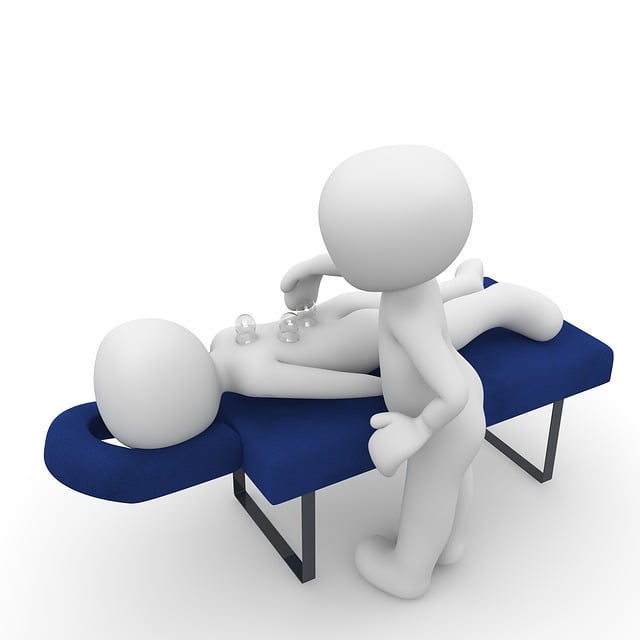Cold therapy, including ice and cryotherapy, effectively manages joint pain and inflammation by reducing swelling, numbing pain, and slowing metabolic processes. It's ideal for acute injuries, sudden joint pain, and post-workout soreness. Heat therapy, on the other hand, benefits chronic conditions like arthritis, tendonitis, and fibromyalgia by relaxing muscles, increasing blood flow, and promoting flexibility. Combining both techniques offers natural joint pain relief for various conditions, aiding recovery and improving overall well-being. Key methods include cold compresses, ice water immersion, and advanced treatments like cryotherapy and water therapy.
Looking for natural joint pain relief? Alternating cold and heat therapy is a game-changer for managing conditions like arthritis and inflammation. This comprehensive guide explores the benefits of cold therapy for joint pain, from traditional ice packs to advanced techniques like cryotherapy and water therapy. Discover when to apply heat or cold, implement effective cold compress techniques, and unlock faster recovery without relying on medication.
Understanding Cold Therapy for Joint Pain: Benefits and Uses
Cold therapy for joint pain is a popular and effective approach to managing discomfort and inflammation in arthritic conditions and post-workout soreness. Also known as ice therapy, this method involves applying cold or frozen materials directly to the affected joints, such as compresses, packs, or immersing the joints in cold water. The benefits of cold compress for joints are numerous; it helps reduce swelling by constricting blood vessels, numbing the pain, and slowing down metabolic processes at the site of injury or inflammation. This is particularly beneficial for conditions like arthritis, where chronic joint pain can be significantly alleviated.
One of the key uses of cryotherapy for joint pain relief is to promote quicker recovery after physical activities or injuries. Cold packs for inflammation work by interrupting pain signals to the brain and reducing muscle spasms, which speeds up the healing process. Cold water therapy for joint recovery is also a popular practice among athletes who use it as part of their post-workout routines. By alternating between cold and heat therapies, one can achieve natural joint pain relief, enhancing overall mobility and comfort.
When to Apply Heat vs. Cold for Arthritis and Inflammation
When it comes to managing arthritis and reducing inflammation, knowing when to apply heat or cold is key for achieving optimal joint pain relief. Ice therapy, or cryotherapy, is often recommended as a first-line treatment for acute injuries or sudden onset of joint pain. The benefits of a cold compress include reducing swelling, numbing the affected area, and decreasing pain sensitivity. This makes it an excellent choice for conditions like sprains, strains, or post-workout muscle soreness.
In contrast, heat therapy is more beneficial for chronic inflammation and stiff joints. Applying heat can relax muscles, increase blood flow to the affected areas, and promote joint flexibility. Hot water therapy, such as soaking in warm baths or using heating pads, is particularly effective for conditions like arthritis, tendonitis, or fibromyalgia. Heat helps reduce stiffness and can provide long-lasting natural joint pain relief, making it a valuable tool for maintaining mobility and range of motion.
Implementing Cold Compress Techniques for Optimal Joint Recovery
Implementing Cold Compress Techniques for Optimal Joint Recovery
Cold therapy for joint pain is a highly effective approach to alleviate inflammation and reduce arthritis symptoms. Ice therapy, or cryotherapy, involves applying cold packs or ice to affected joints, which can provide significant relief from acute pain and swelling. The benefits of cold compress for joints are well-documented; it helps constrict blood vessels, decreasing blood flow to the injured area, which in turn reduces inflammation. This natural joint pain relief method is particularly beneficial for post-exercise recovery, sports injuries, or managing chronic conditions like arthritis.
Cold water therapy for joint recovery involves immersing yourself in cold water or using cold packs consistently over several days. This can accelerate the healing process by stimulating blood circulation once the body reheats, carrying essential nutrients and oxygen to repair damaged tissues. Combining these techniques allows for a balanced approach to managing joint pain, offering both immediate relief and long-term recovery support.
Exploring Advanced Options: Cryotherapy and Water Therapy for Severe Cases
For severe cases of joint pain and inflammation, exploring advanced options like cryotherapy and water therapy can offer significant benefits. Cryotherapy involves exposure to extreme cold temperatures, which has been shown to reduce inflammation, numb pain receptors, and promote tissue repair. This method is particularly effective for conditions such as arthritis, where chronic inflammation can severely impact mobility and quality of life.
Water therapy, also known as aquatic therapy or hydrotherapy, takes advantage of buoyancy and water pressure to provide gentle joint support and stimulation. It’s an excellent choice for post-injury recovery or when traditional cold and heat therapy isn’t providing sufficient relief. Combining these advanced techniques can create a comprehensive natural joint pain relief strategy that targets both acute and chronic inflammation while aiding in rehabilitation and enhancing overall mobility.
Alternating cold and heat therapy is a powerful tool to manage joint pain, offering both immediate relief and long-term benefits. By understanding when to apply each, as discussed in this article, you can effectively navigate your joint care journey. From the soothing effects of cold compresses to advanced treatments like cryotherapy, these techniques provide natural solutions for arthritis, inflammation, and recovery. Incorporating these practices into your routine could be a game-changer for managing joint pain and enhancing overall mobility.
